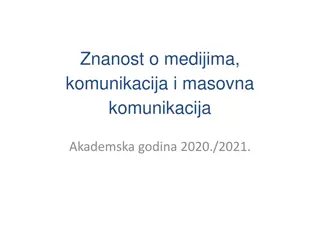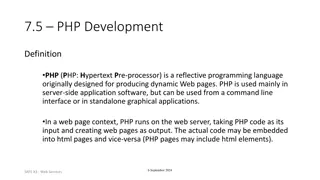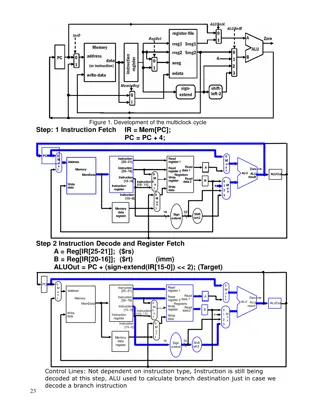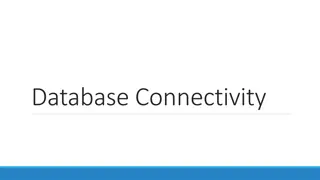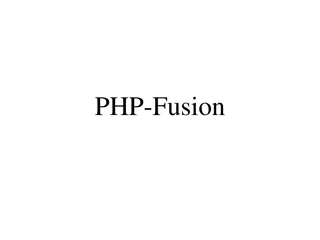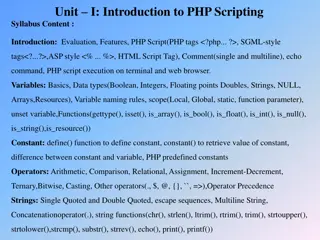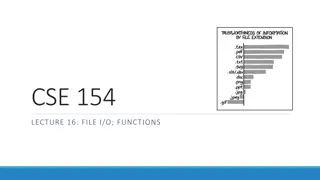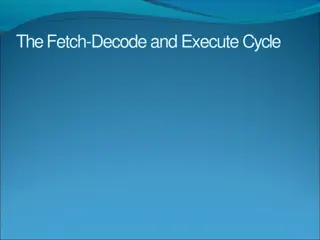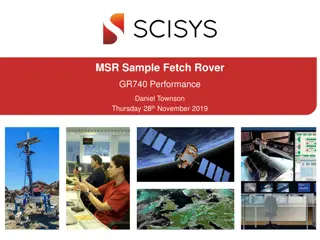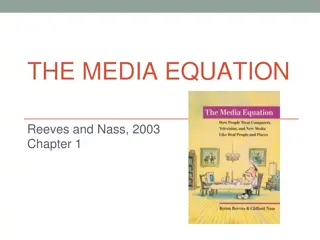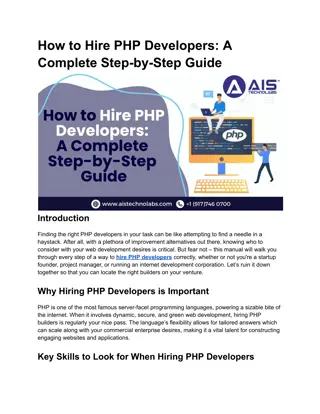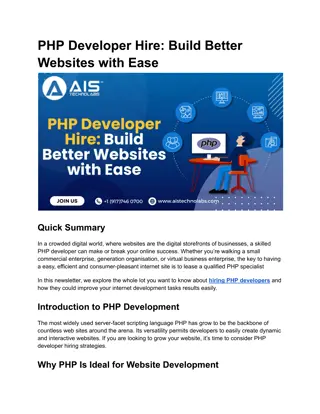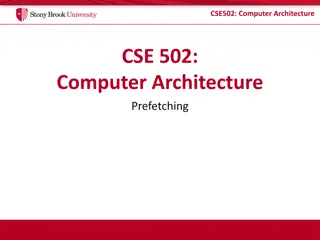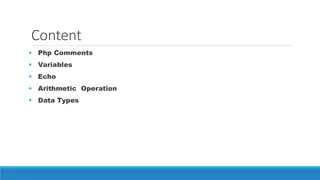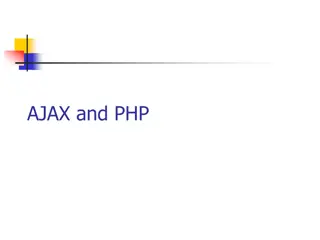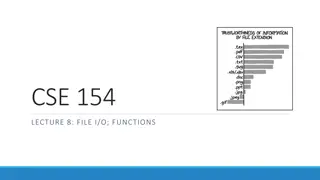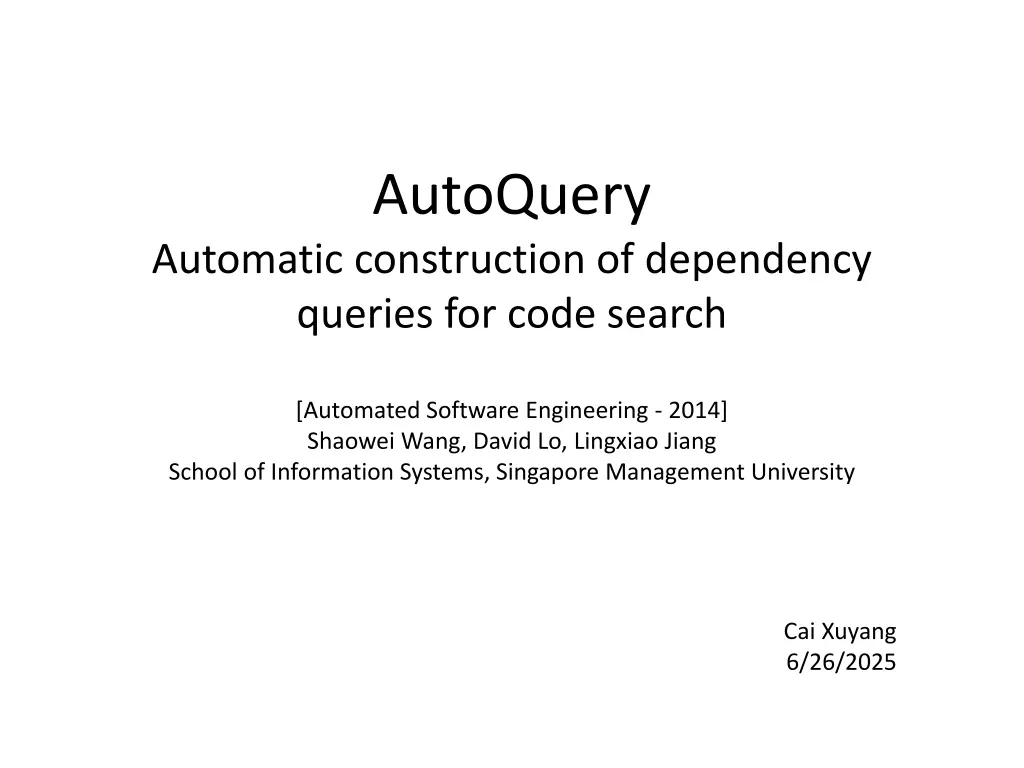
Automatic Dependency Query Construction for Code Search
Explore the automated construction of dependency queries for code search using AutoQuery, enhancing search accuracy and efficiency in software projects. Learn about the overall framework, PDGs generation engine, and query generation engine outlined in this study for enhanced bug fixing and code search. Discover how AutoQuery can automatically construct dependency queries from code examples, improving search accuracy significantly.
Uploaded on | 1 Views
Download Presentation

Please find below an Image/Link to download the presentation.
The content on the website is provided AS IS for your information and personal use only. It may not be sold, licensed, or shared on other websites without obtaining consent from the author. If you encounter any issues during the download, it is possible that the publisher has removed the file from their server.
You are allowed to download the files provided on this website for personal or commercial use, subject to the condition that they are used lawfully. All files are the property of their respective owners.
The content on the website is provided AS IS for your information and personal use only. It may not be sold, licensed, or shared on other websites without obtaining consent from the author.
E N D
Presentation Transcript
AutoQuery Automatic construction of dependency queries for code search [Automated Software Engineering - 2014] Shaowei Wang, David Lo, Lingxiao Jiang School of Information Systems, Singapore Management University Cai Xuyang 6/26/2025
Outline Introduction Overall Framework PDGs Generation Engine Query Generation Engine Evaluation
Introduction Many software projects contain a large amount of source code. Searching takes much time and resource Scenario: bug fixing Hard to find (tap on experience) Have found Bug FileBug FileBug Bug File Bug File File Similar bugs in relevant source code files Tedious and Error-prone!
Introduction Existing code search tools Text-based Accept texts and search code fragments Match identifier names to the words in query Dependency-based Contain dependency relations and structures Improve search accuracy Hard to construct such queries AutoQuery: It can automatically constructing dependency queries from code examples.
PDGs Generation Engine Program dependence graph A graph G = (N, E), where N is a set of nodes and E is a set of edges. Node Set: {n1 = (ntype1, text1) , . . . ni =(ntypei , texti) , . . .}. ntypei -> the node type texti -> textual representations Edge Set: {e1 = (nL1 , nR1 , etype1), . . . , ei =(nLi , nRi , etypei), . . .}. etype -> data dependency or control dependency
PDGs Generation Engine Program dependence graph - Example Code Fragment { If(C > 1) C = getStr() Else C = ext() }
PDGs Generation Engine Dependence Query Language (DQL) Node declaration (ndecl): Node variables and their types - function call, expression, declaration, etc. Node description (ndesc): Constraints on declared node variables - contains, inFile, inFunc, atLine, etc. Relationship description (rdesc): Constraints on the relations among declared node variables - dataDepends, controls, Onestep, etc. Targets (target): The variables specified in ndecl that are desired search targets
PDGs Generation Engine Dependence Query Language (DQL) - Example
PDGs Generation Engine Code Extension Infer the types of variables and signatures of invoked functions in a code fragment. 1. Declarations of undeclared variables 2. Definitions of undefined functions 3. New classes (data types) that specify undefined types Steps 1. Create the parse tree by using pycparser 2. Traverse the parse tree and get all elements 3. Infer the undeclared/undefined elements iteratively
PDGs Generation Engine Code Extension Inference Heuristics
PDGs Generation Engine Code Extension - Example Inference Steps
PDGs Generation Engine Code Extension - Example Inference Steps
PDGs Generation Engine Code Extension - Example Inference Steps
PDGs Generation Engine Code Extension - Example Inference Steps
PDGs Generation Engine Code Extension - Example Inference Steps
PDGs Generation Engine Code Extension - Example Extended Code
PDGs Generation Engine PDG Generation We feed the extended code to CodeSurfer and get a PDG. PDG Code Fragment CodeSurfer
Query Generation Engine We then find commonalities among multiple PDGs generated from a set of example code fragments. 1. Mine simple maximal common subgraph 2. Recover textual information PDG1 Textual sub- PDG Common sub-PDG PDG2 PDG3
Query Generation Engine Mine simple maximal common subgraph Convert each PDG G into their simple graph representation Gnotext Mine for maximal subgraphs that appear on all Gnotext PDG1 Gaston Common sub-PDG PDG2 PDG3
Query Generation Engine Recover textual information Selecting representative candidates For each node in subPDG: If all candidate set of size 1 - Take all candidate nodes as the representative nodes else if there are candidate set of size 1 - Take the nodes in these sets as the representative nodes - Get the node that are most similar to the REP in other sets else - Pick an arbitrary node as representative nodes - Get the node that are most similar to the REP in other sets Common sub-PDG PDG2 PDG1 Node Matching based on labels ntype and etype PDG3
Query Generation Engine Recover textual information Unifying textual labels 1. Text filtering function: only name of the function is kept expression: keep the right side of the expression 2. Get the longest common text from the pre-processed text labels. 3. Split the resultant text and remove special symbols
Query Generation Engine Example: PDG Sub common PDG
Query Generation Engine Example: PDG if Sub common PDG ext
Query Generation Engine Example: Textual PDG DQL
Evaluation Experimental settings: Commits: Touch many files that modified in a similar way structurally and semantically
Evaluation 47 widespread changes 5 53 code locations 478 fragments 2 20 lines of code of each fragment A user study (generate DQL Query) 10 PhD students perform 47 code search tasks At least two years of C and C++ programming experience Familiar with Program Dependency Graph Have taken a course on program analysis 20 min tutorial and 10 min exercise
Evaluation Experiment results Three research questions to answer: Can AutoQuery generate good dependency queries that can retrieve relevant search results? Can AutoQuery perform comparably well as developers in constructing good dependency queries? Can AutoQuery improve the time it takes to construct queries?
Evaluation Effectiveness of AutoQuery Index Number Recall = 1 21 Precision = 1 25 F-measure = 1 12
Evaluation AutoQuery versus UserQuery Wilcoxon signed-rank Test Index p value Recall 0.17 Precision 0.02 significant F-measure 0.49
Evaluation User always misses important constraints! AutoQuery versus UserQuery
Evaluation AutoQuery versus UserQuery Improvement: Develop a machine learning technique that can remove or weaken some of the generated constraints automatically.
Evaluation Efficiency of AutoQuery compared with UserQuery Method Total Time Aver Time AutoQuery 27.5s 0.6s UserQuery 10,509s 223.6s 723s 521s 3.9s 19.8s
Evaluation Efficiency of AutoQuery compared with UserQuery Improvement: Compress the dependence graph by removing some unimportant nodes and edges.
Thanks Thanks Q&A Q&A

